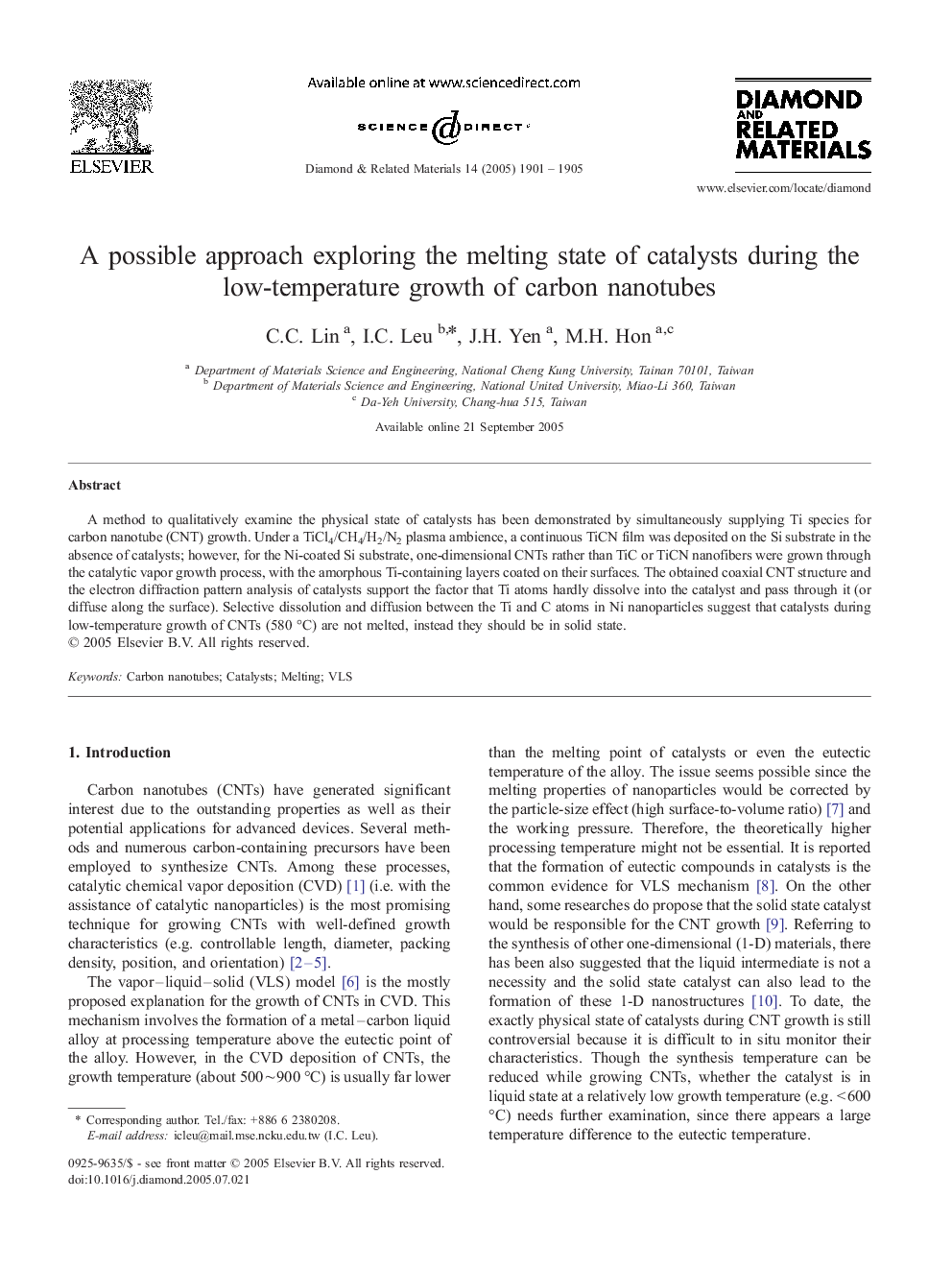| Article ID | Journal | Published Year | Pages | File Type |
|---|---|---|---|---|
| 702485 | Diamond and Related Materials | 2005 | 5 Pages |
A method to qualitatively examine the physical state of catalysts has been demonstrated by simultaneously supplying Ti species for carbon nanotube (CNT) growth. Under a TiCl4/CH4/H2/N2 plasma ambience, a continuous TiCN film was deposited on the Si substrate in the absence of catalysts; however, for the Ni-coated Si substrate, one-dimensional CNTs rather than TiC or TiCN nanofibers were grown through the catalytic vapor growth process, with the amorphous Ti-containing layers coated on their surfaces. The obtained coaxial CNT structure and the electron diffraction pattern analysis of catalysts support the factor that Ti atoms hardly dissolve into the catalyst and pass through it (or diffuse along the surface). Selective dissolution and diffusion between the Ti and C atoms in Ni nanoparticles suggest that catalysts during low-temperature growth of CNTs (580 °C) are not melted, instead they should be in solid state.
